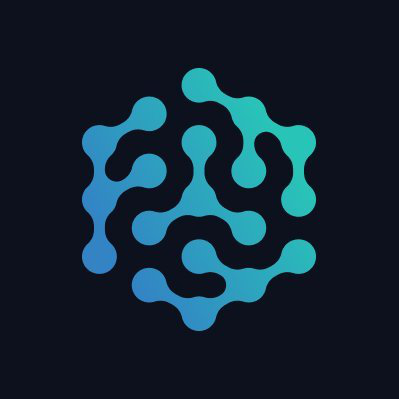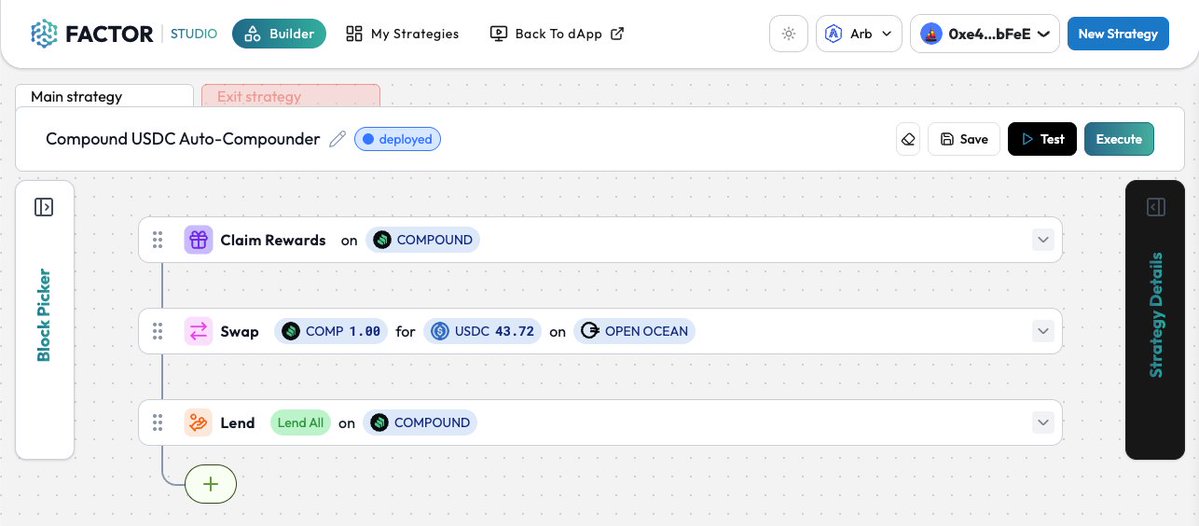Compound-koers
in EUR

Over Compound
Disclaimer
OKX geeft geen beleggings- of vermogensadvies. Je moet zorgvuldig overwegen of het verhandelen of bezitten van digitale bezittingen voor jou geschikt is in het licht van je financiële toestand. Raadpleeg je juridische, fiscale of beleggingsadviseur als je vragen hebt over je specifieke situatie. Raadpleeg voor meer informatie onze Gebruiksvoorwaarden en Risicowaarschuwing. Door gebruik te maken van de website van derden ('TPW'), ga je ermee akkoord dat elk gebruik van de TPW onderworpen is aan en beheerst wordt door de voorwaarden van de TPW. Tenzij uitdrukkelijk schriftelijk vermeld, zijn OKX en haar partners ("OKX") op geen enkele manier verbonden met de eigenaar van de exploitant van de TPW. Je gaat ermee akkoord dat OKX niet verantwoordelijk of aansprakelijk is voor verlies, schade en andere gevolgen die voortvloeien uit jouw gebruik van de TPW. Houd er rekening mee dat het gebruik van een TPW kan leiden tot verlies of vermindering van je bezittingen. Het product is mogelijk niet in alle rechtsgebieden beschikbaar.
Prijsprestaties van Compound
Compound op sociale media



Handleidingen

Maak een gratis OKX-account aan.
Stort geld op je account.
Kies je crypto.
Compound op OKX Learn
Compound Veelgestelde vragen
Compound is een gedecentraliseerd financieringsplatform (DeFi) dat het lenen en lenen van cryptocurrency's mogelijk maakt. Het werkt via een governance-token, genaamd COMP.
Het houden van COMP biedt verschillende hulpprogramma's en voordelen binnen het Compound-ecosysteem. COMP-houders kunnen deelnemen aan liquiditeitshandelsprogramma's en hun tokens staken op platforms zoals OKX Earn om beloningen te verdienen. Daarnaast kan COMP worden gebruikt voor gedecentraliseerd lenen en lenen op het Compound-platform. Daarnaast kunnen COMP-houders deelnemen aan governance door protocolwijzigingen voor te stellen en te stemmen, wat de richting en ontwikkeling van het ecosysteem beïnvloedt.
Eenvoudig COMP-tokens kopen op het OKX-cryptovalutaplatform. Beschikbare handelsparen in de OKX-spothandelstermine zijn onder meerCOMP/USDTenCOMP/USDC.
Je kunt ook COMP kopen met meer dan 99 lokale valuta door de "Snel kopen" optie. Andere populaire cryptotokens, zoalsBitcoin (BTC),Ethereum (ETH),Tether (USDT), enUSD Coin (USDC), zijn ook beschikbaar.
Je kunt ook je bestaande cryptovaluta swappen, waaronderXRP (XRP),Cardano (ADA),Solana (SOL), enChainlink (LINK), voor COMP zonder vergoeding en zonder prijsverschuiving door gebruik te maken vanOKX Convert.
Bezoek de om de geschatte realtime conversieprijzen tussen lokale valuta's, zoals de USD, EUR, GBP en anderen, in COMP te bekijkenRekenmachine voor OKX cryptoconverteerder. De crypto-uitwisseling met hoge liquiditeit van OKX zorgt voor de beste prijzen voor je crypto-aankopen.
Duik dieper in Compound
Compound (COMP) je kryptoměna, která hraje významnou roli při utváření budoucnosti výpůjčních a úvěrových protokolů v rámci odvětví decentralizovaných financí (DeFi).
Co je Compound
Compound je významný DeFi protokol, který využívá svůj nativní token COMP jako nedílnou součást své platformy. COMP umožňuje uživatelům bezproblémový přístup ke službám, které Compound nabízí, a jejich využívání. Jednou z kritických vlastností COMP je jeho funkce správy, která umožňuje držitelům tokenu aktivně se podílet na rozhodovacím procesu. Držením tokenů COMP mají uživatelé právo navrhovat a hlasovat o úpravách a vylepšeních protokolu, což jim umožňuje utvářet jeho budoucí vývoj.
Tým Compound
Tým Compound tvoří blockchainoví programátoři a podnikatelé, které vede společná vize vytvoření efektivního a dostupného finančního systému. Tým vede Robert Leshner, který do něj vnáší odborné znalosti z oblasti ekonomie a financí. Tým dosáhl pozoruhodných milníků a zajistil si financování ve výši více než 8 milionů dolarů od významných zúčastněných stran. V současné době Compound protocol spravuje aktiva v hodnotě více než 1 miliardy dolarů, což dokládá úspěch týmu při budování robustní a důvěryhodné platformy.
Jak Compound funguje?
Compound funguje jako protokol DeFi, který usnadňuje půjčování a vypůjčování kryptoměn. Je postaven na blockchainu Ethereum a uživatelé mohou tyto činnosti provádět transparentně a bezpečně.
Nativní token platformy, COMP, slouží dvojímu účelu: správě a pobídkám. Držitelé COMP mají právo navrhovat změny protokolu a hlasovat o nich, čímž utvářejí jeho budoucnost. Kromě toho je COMP mechanismem odměn, který uživatele povzbuzuje k dodávání aktiv nebo půjčování proti zástavě. To motivuje k účasti a přispívá k celkové funkčnosti platformy.
Nativní token platformy Compound: COMP .
Nativní token Compound, COMP, hraje v ekosystému klíčovou roli, protože plní několik funkcí. Token COMP s maximální nabídkou 10 milionů tokenů funguje na blockchainu Ethereum jako token ERC-20. Používá se pro správu a odměny za těžbu likvidity v rámci platformy Compound.
Držitelé tokenu COMP mohou navrhovat a hlasovat o úpravách protokolu a aktivně se tak podílet na decentralizovaném řízení platformy. To dává komunitě možnost utvářet budoucí směřování Compoundu.
Tokeny COMP jsou navíc využívány jako pobídky pro uživatele, kteří se zapojí do programu těžby likvidity protokolu DeFi. Poskytováním likvidity platformě mohou uživatelé získávat tokeny COMP jako odměny, což dále zvyšuje účast a likviditu v ekosystému.
Jak stakovat COMP
Aby mohli držitelé tokenů COMP stakovat a maximalizovat odměny, měli by si je zakoupit na renomovaných kryptoměnových burzách, jako je například OKX. Pokud je ještě třeba založit účet, je třeba dokončit registraci a zároveň nastavit peněženku ERC-20.
Po provedení těchto kroků lze tokeny COMP odeslat na zvolenou stakovou platformu, jako je OKX Earn, která nabízí flexibilní nastavení stakování. Další krok zahrnuje potvrzení požadované částky COMP ke stakování a výběr tlačítka Subscribe pro zahájení procesu stakování.
Případy použití COMP
Token COMP má v rámci ekosystému Compound a širšího sektoru DeFi několik případů využití. Držitelé COMP se mohou podílet na správě protokolu Compound navrhováním návrhů a hlasováním o důležitých rozhodnutích. Kromě toho mohou získávat odměny účastí v programech DeFi nebo sázením svých tokenů COMP.
Distribuce COMP
Distribuce tokenů COMP je následující:
- 50 % tokenů je přiděleno na program těžby likvidity na Compound.
- 25 % je vyhrazeno pro tým Compound a poradce.
- Zbývajících 25 % je vyhrazeno pro budoucí potřeby v rámci ekosystému Compound.
Jaká je budoucnost společnosti Compound
Budoucnost společnosti Compound zahrnuje plány na rozšíření platformy zahrnující stablecoiny, fiat měny a další kryptoměny. Z geografického hlediska chce Compound rozšířit svou přítomnost do slibných regionů, jako je Asie a Latinská Amerika. Kromě toho tým hodlá představit nové produkty a služby DeFi, včetně derivátů a finančních trhů, a navázat partnerství s dalšími protokoly DeFi.
ESG-vermelding






